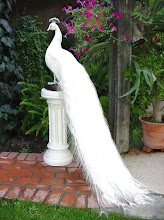Ganesha: the Elephant Headed Prince
With an elephant head and a round potbelly, Ganesha is perhaps the most popular and best known of the Hindu deities. Ganesha is most notably known as the “remover of obstacles” but also resides over the realms of wisdom, luck, doorways, the household and writing. Before Ganesha was born, his father was often away from his wife, Parvati, fighting distant battles or spending long stretches of time in deep meditation. Shortly after Shiva’s departure for yet another battle trip, Parvati gave birth to a son who she raised over the years while Shiva was still out to battle. When Shiva finally did return home, he found a young boy guarding the entrance to his cave. Since Ganesha had never met his father, he stood his ground to protect his mother while she was bathing inside the cave. Unfortunately, thinking they were both an enemy, they fought each other, and in a fierce rage Shiva chopped off Ganesha’s head with his sword. Hearing a ruckus outside, Parvati emerged from the cave to find her son decapitated and sternly ordered Shiva to remedy the situation. Shiva and his army quickly scavenged the local area to find a suitable replacement for Ganesha’s head. Shiva was able to save Ganesha’s life by replacing his head with the head of a young elephant.
The complicated form of Ganesha is rich with symbolism. Ganesha is normally depicted with four arms: one using a mudra of protection, one holding a modaka (sweet), one holding a ankusha (elephant goad), and one holds a pasa (noose). The modaka symbolizes the sweet rewards gained while on the spiritual path. The ankusha is a tool used for training elephants and represents Ganesha’s role in prodding one out of inertia and back onto their spiritual path. The pasa symbolizes Ganesha’s powers at curbing the ego, restraining passion and conquering delusion. His potbelly signifies the bounty of nature and his large head is symbolic of the wisdom of the elephant.
Ganesha is most famously known as the “remover of obstacles.” He has the power to remove any obstacle, whether it is physical or spiritual, from the path of his devotees. If one is not respectful or faithful to Ganesha, he is known to place obstacles in one’s path to render worship fruitless and cause one’s undertakings to fail. Ganesha is venerated as the deity of letters and scriptures. Legend states that Ganesha, using his own tusk as a quill scribed India’s greatest epic, the Mahabharata. Ganesha also rules over the threshold. As he guarded his mother's doorway from unwanted guests, so does he guard the entrance into the inner sanctum of the spirit. Thus, Ganesha is traditionally invoked and honored at the beginning of important rites of passage and rituals, as well as before starting upon any new project.
Ganesha has many stories detailing his symbolism and roles as well as describing his cleverness, playfulness and wisdom. To read more on Ganesha and his many tales, explore the following titles: Ganesha: The Auspicious... The Beginning The Book of Ganesha In a World of Gods and Goddesses
skip to main |
skip to sidebar

smart
pea cock

smart
indianhot2
indianhot1
I P counter

Powered byIP2Location.com
eenadu
Blog Archive
-
▼
2008
(326)
-
▼
February
(243)
- aartical240
- aartical239
- aartical238
- aartical237
- aartical236
- aartical235
- aartical234
- aartical233
- aartical232
- aartical231
- aartical230
- aartical229
- aartical228
- aartical227
- aartical226
- aartical225
- aartical224
- aartical223
- aartical222
- aartical221
- aartical220
- aartical219
- aartical218
- aartical217
- aartical216
- aartical215
- aartical214
- aartical213
- aartical212
- aartical211
- aartical210
- aartical209
- aartical207
- aartical206
- aartical205
- aartical204
- aartical203
- aartical202
- aartical201
- aartical200
- aartical199
- aartical197
- aartical196
- aartical195
- aartical194
- aartical193
- aartical192
- aartical191
- aartical190
- aartical189
- aartical188
- aartical187
- aartical186
- aartical185
- aartical184
- aartical183
- aartical182
- aartical181
- aartical180
- aartical179
- aartical178
- aartical177
- aartical176
- aartical175
- aartical174
- aartical173
- aartical172
- aartical171
- aartical170
- aartical169
- aartical168
- aartical167
- aartical166
- aartical165
- aartical164
- aartical163
- aartical162
- aartical161
- aartical160
- aartical158
- aartical157
- aartical156
- aartical155
- aartical154
- aartical153
- aartical152
- aartical151
- aartical150
- aartical149
- aartical148
- aartical147
- aartical146
- aartical145
- aartical144
- aartical143
- aartical142
- aartical141
- aartical140
- aartical139
- aartical138
-
▼
February
(243)
No comments:
Post a Comment